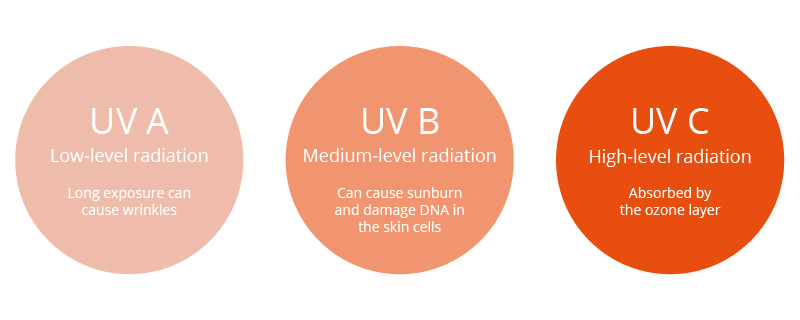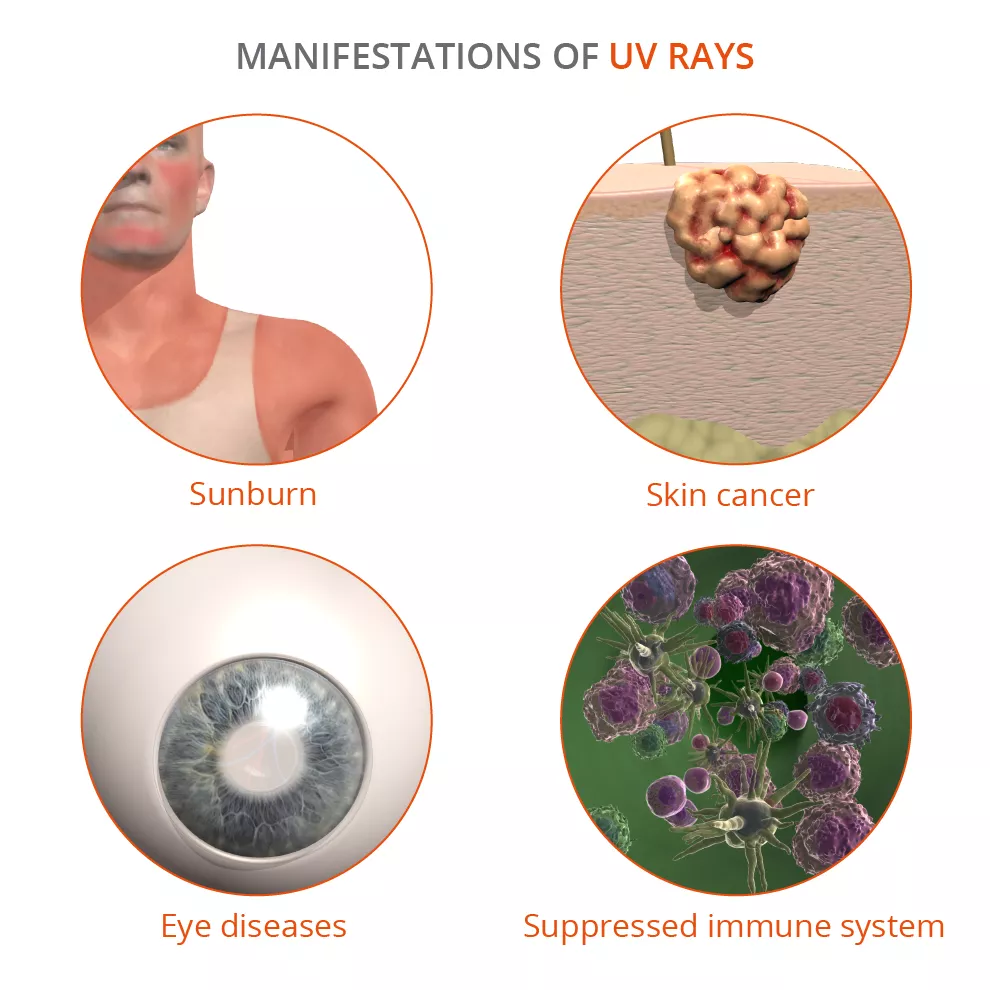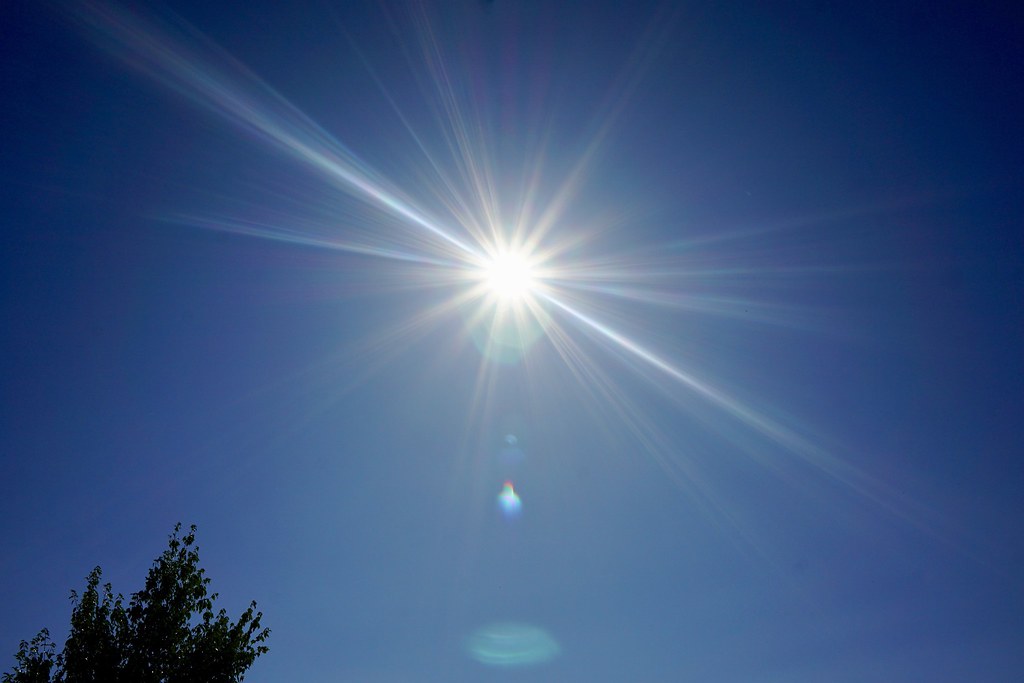Every summer, many are excited to bathe in the sun, but what really happens to your body when you tan? You know you need to apply sunscreen, but have you ever understood exactly why it’s important? Let’s dig deep to explore what really happens to your skin after being exposed to ultraviolet (UV) rays.
UV rays
UV rays are a type of electromagnetic radiation, a form of energy that comes from the sun but also from other sources like tanning beds and some fluorescent lights.
Radiation itself is the flow of energy from various sources. They can be high level, such as x-rays, or low level like radio waves. UV rays are in the middle of this spectrum. UV radiation can be divided into three main groups:
UVA rays – Low-level radiation that over long exposure can cause wrinkles and age your skin. It can also contribute to some skin cancers.
UVB rays – Medium-level radiation that is directly responsible for sunburn. It causes damage to the DNA in your skin cells and is the biggest cause of skin cancer.
UVC rays – High-level radiation that fortunately is absorbed by the ozone layer and doesn’t reach the earth. However, man-made UVC rays can be found quite regularly in welding torches, mercury lamps and UV sanitizing bulbs used to kill germs in water, air and on surfaces.

We are mainly exposed to these rays through sunlight; 95% of rays are UVA while the remaining 5% are UVB. Natural UV rays are strongest:
-
- In the spring and summer
- 10 a.m. – 4 p.m.
- Closer to the equator
- At high altitude
It is important to note that even on cloudy days, UV rays can still reach us by reflecting off surfaces such as water, sand, snow, the sidewalk and even grass. However, the ozone layer does partially protect us by filtering out some of the UV rays.
The benefits of UV rays on our body
It’s not all bad, as when your skin is exposed to sunlight it produces vitamin D. This regulates our calcium levels and helps keep our bones strong. UVB rays from the sun react with a protein called 7-DHC in the skin resulting in vitamin D3, which is the active form of vitamin D.
The more vitamin D our body makes, the more our cancer risk reduces (outlined in this study). Its beneficial properties helped curb the rickets epidemic in the 1800s and also helps with other conditions such as osteoporosis, muscle weakness and even depression. Today, foods are fortified with vitamin D to take advantage.
Another example is a treatment called phototherapy, which uses natural or artificial light to improve different medical conditions. It helps to reduce jaundice in newborn babies and is used to tackle psoriasis, a disease resulting in itchy scaly skin. Phototherapy for psoriasis works by aiming UVA rays directly at the target area after the drug psoralen is taken.
The risks of UV rays on our body
Although we need some sun, prolonged unprotected exposure to UV rays can be harmful to our skin and this manifests itself in a variety of ways.
Sunburn – UV rays from the sun or artificial sources like tanning beds or sunlamps can cause sunburn. Although tanning beds and sunlamps mainly emit UVA, even the small amount of UVB rays can damage your skin (severity is dependent on session frequency and length). When sunburned, your skin is painful and hot to touch. It will look inflamed and be tender and itchy. If severe it can also cause headaches, nausea and fatigue.
Skin cancer – UV rays damage the molecular make-up of our skin, causing genetic mutations in our DNA that can lead to skin cancer. There are two different types of skin cancer:
-
- Melanoma – The more serious but less common disease and not always sun-related. (It could also be a result of genetic factors or immune deficiencies.)
- Nonmelanoma – There are two types:
- Basal cell carcinomas are the most common type and mainly appear as fleshy bumps or nodules on sun-exposed areas like the face, neck and arms. It grows slowly and rarely spreads to other areas of the body, though if left untreated it can end up damaging your bones.
- Squamous cell carcinomas may look like nodules or fleshy red patches. They are tumors that can spread to other areas of the body.
Eye diseases – These include cataracts, eye cancer, pterygium (growth on the eye) and snow blindness, which occurs after exposure to UV reflections off surfaces like snow, ice, water and sand.
Suppressed immune system – UV rays weaken the skin’s defenses to ward off invaders such as skin cancer and infections.
Premature skin aging – Prolonged exposure to the sun can cause wrinkles, liver spots, leathery skin and actinic keratosis (red and rough-textured growths). Since the build-up of damage to our skin takes years, most people think premature aging is a natural way of life. But if we protect ourselves from the sun well while young, a lot of this aging can be avoided. Seek medical attention as soon as you notice actinic keratosis, as it is a risk factor for squamous cell carcinomas.

There are also artificial rays we should try and avoid. These include:
Black-light lamps – Used to view fluorescent material, the bulbs have a purple glow as a filter blocks out some of the light while letting the UV rays through.
Mercury-vapor lamps – These are often used in streetlights, or for large areas like gyms and stores, and are made up of two bulbs. The inner bulb emits light and UV rays, and the outer bulb filters out the UV rays. But if the outer bulb is broken then there is no protection.
How to protect yourself from UV rays
Following the below steps will help you to stay safe and still be able to have fun in the sun:
-
- Stay in the shade or avoid staying in the sun for long periods between 10 a.m. and 4 p.m.
- Wear long-sleeve tops and pants to cover up the most exposed parts of your body.
- Wear a wide-brimmed hat to protect your face. It’s even better if it has a drape of material down the back as it will protect your neck too.
- Wear sunglasses that have a protective UVA/UVB filter to prevent sun damage to your eyes.
- Avoid tanning beds and sun lamps, remembering any change in your natural skin color is a sign of damage.
- Use a high-SPF sunscreen; apply often and always after swimming.
The images used in this piece have been taken from Primal’s Anatomy & Physiology module. To learn more, please fill in the form here and our team will be in touch.
